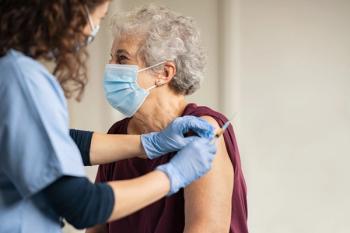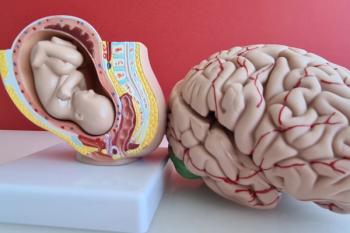Since 2017, rates of depression and anxiety have risen in the United States among children, adolescents, and young adults, particularly during the COVID-19 pandemic, according to a new study published in JAMA Network Open.1
These results highlight the need for more public health resources to combat the growing mental health crisis in young people.
The massive effect of depression and anxiety on young people is already well documented. Now, the researchers wanted to assess how rates of depression and anxiety changed before and during the COVID-19 pandemic.
The cohort study included over 1.7 million participants aged 5 to 22 years within the Kaiser Permanente Southern California health system. Researchers drew on electronic medical records and used International Statistical Classification of Diseases, Tenth Revision (ICD-10) codes to identify diagnoses of depression and/or anxiety between January 1, 2017 and December 31, 2021. Depression diagnoses including major depressive disorder (MDD) with single or recurrent episodes or persistent depressive disorder. Anxiety diagnoses included generalized anxiety disorder, social anxiety disorder, panic disorders, or phobia-related disorders. Anxiety is a common comorbidity of depression; in this study, the researchers specifically sought to study anxiety diagnoses without depression, a subset of patients for which there is little data.
The mean age of the participants was 14 years, and 51% were male. The participants were 50% Hispanic, 8% non-Hispanic Asian, 8% non-Hispanic Black, and 23% non-Hispanic White. The researchers stratified the results by age, gender, race/ethnicity, household income, weight status, and comorbidities. Participants were grouped by ages 5.0 to 10.9, 11.0 to 13.9, 14.0 to 17.9, and 18 to 22.9 years to reflect the different social environments of elementary school, middle school, high school, and college.
READ MORE: FDA Clears First Digital Therapeutic for Treatment of Generalized Anxiety Disorder
The researchers defined incidence as the number of new cases over the total number of at-risk participants; prevalence was defined as the number of new cases over the total number of participants in that year.
- Discuss mental health concerns with patients—especially those in younger age groups.
- Screen young women when they come pick up prescriptions: women aged 14 to 22 are at a higher risk for depression and/or anxiety.
- Offer support and resources where applicable, including referrals to a clinical who can provide targeted mental health care.
From 2017 to 2021, the researchers found a 55.6% incidence increase in depression diagnosis (from 1.35% to 2.10%) and a 60% prevalence increase (from 2.55% to 4.08%). The incidence of depression was 1.35% in 2017, 1.58% in 2018, 1.76% in 2019, 1.84% in 2020, and 2.10% in 2021. The prevalence of depression was 2.55% in 2017, 2.92% in 2018, 3.27% in 2019, 3.53% in 2020, and 4.08% in 2021.
They found a 31.1% increase in anxiety diagnosis incidence (from 1.77% to 2.32%) and a 35.2% increase in prevalence (from 3.13% to 4.22%). The incidence of anxiety without depression was 1.77% in 2017, 2.03% in 2018, 2.10% in 2019, 1.93% in 2020, and 2.32% in 2021. The prevalence was 3.13% in 2017, 3.51% in 2018, 3.75% in 2019, 3.61% in 2020, and 4.22% in 2021.
While the results indicated increases in diagnoses among all subgroups, the researchers noted the most significant increases among those aged 14 to 17 and 18 to 22 years; female participants; American Indian, Alaska Native, non-Hispanic White, or multiracial; and those with higher household incomes, obesity, or comorbidities. Age was the most significant predictor of a depression diagnosis, while weight status was the most significant predictor of an anxiety diagnosis without depression.
While the COVID-19 pandemic caused major disruptions to health care systems and services, these results indicate that rates of newly-diagnosed depression and anxiety increased despite this. The mean incidence of depression was higher during the pandemic (1.97% vs 1.56%), though the increase in rate from 2020 to 2021 (0.26%) was not significantly more than the increases from 2017 to 2019. For anxiety diagnoses, both the mean incidence (2.13% vs 1.97%) and increase in rate (0.39% vs 0.17%) were significantly higher during the pandemic.
With depression and anxiety diagnoses increasing across all subgroups, the researchers stressed the need for increased mental health services for children, adolescents, and young adults.
READ MORE: COVID-19 Resource Center
Ready to impress your pharmacy colleagues with the latest drug information, industry trends, and patient care tips? Sign up today for our free Drug Topics newsletter.
Reference
1. Xiang AH, Martinez MP, Chow T, et al. Depression and anxiety among US children and young adults. JAMA Netw Open. 2024;7(10):e2436906. doi:10.1001/jamanetworkopen.2024.36906















































































































































